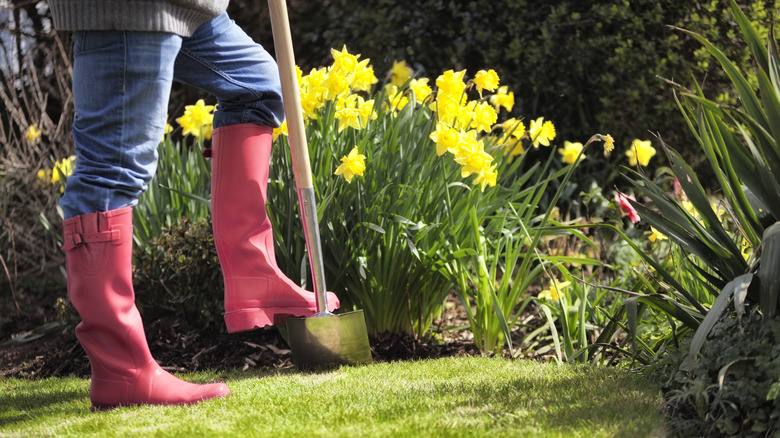The Gorgeous Garden Perennial That'll Send Pesky Groundhogs Running
Groundhogs are adorable animals that can do major damage to your garden and landscape. These rotund rodents tend to sneak in when there are no signs of humans around and make a feast of your plants. Although groundhogs are not exactly picky about what they eat, there are a few plants they won't touch. Among the most repellant perennials you can easily grow in your garden are daffodils. These gorgeous plants are extremely toxic to wildlife — carrying poisonous lycorine and oxalates — and even the most ravenous pests, like groundhogs and squirrels, will instinctively keep their distance from your garden when daffodils emerge in the spring.
You may not see the pests in your garden or landscape, but groundhogs leave tell-tale signs of their presence. Large holes near your affected plants and chew marks on the lower part of plants are a few ways to tell if a groundhog is the culprit of your ravaged garden.
Add daffodils to your landscape
Combine beauty and function by planting a barrier of daffodils around the area you want to protect. These bulbs are hardy in USDA Hardiness Zones 3 through 8, so you can grow them in many regions of the United States. They also multiply by bulb division, so each year, you will have more daffodils and, therefore, more protection from groundhogs. Since there are early-, mid-, and late-season blooming varieties, you can extend the beauty and this flower's repelling capabilities by planting different types together.
While daffodils will repel groundhogs and other pests from your garden, they are fairly short-lived, so you'll need a plan to deal with these creatures after the plants die back in late spring. Thankfully, there are other attractive perennials you can plant with daffodils to keep repelling groundhogs throughout the growing season. Powerfully scented herbs like rosemary and thyme may send groundhogs elsewhere, while vegetables with strong scents like onions, chives, and garlic also act as a deterrent.

